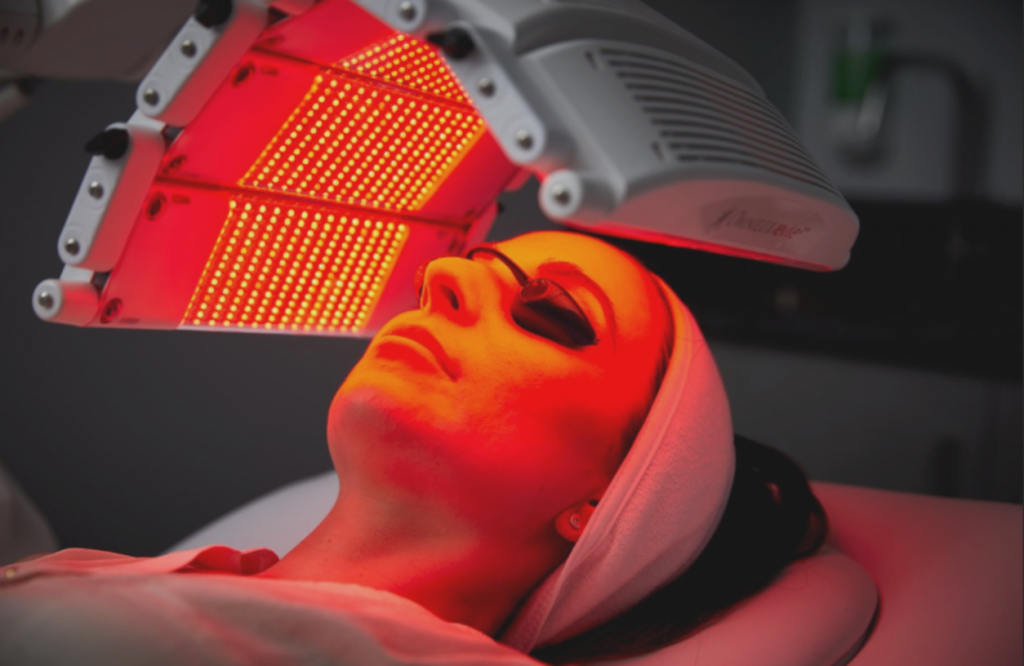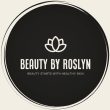LED Phototherapy
LED Phototherapy Treatments
LED phototherapy is an advanced skin treatment ideal for targeting sensitive and inflammatory conditions such as rosacea, psoriasis, ageing, or acneic skin types as well as wound healing, pigmentation and scarring. Originally used by NASA for plant growth experiments planned for space, LED lights were identified to show positive results in wound healing and human tissue growth.
LED phototherapy involves skin being bathed in varying wavelengths of light and colour to promote natural collagen production rejuvenating and stimulating the skin’s healing process.
Blue LED phototherapy provides antibacterial benefits effective for the treatment of acne by targeting the sebaceous glands to reduce oil production and providing powerful antibacterial properties to help rid the skin of acne-causing bacteria while a Red LED phototherapy treatment increases natural hydration and is primarily used for anti ageing to plump and strengthen the skin. Pain free, relaxing and with no down time.
How LED Phototherapy Works
LED light therapy has an established history of skin uses. The U.S. Navy SEALs began using it in the 1990s to help heal wounds quickly and to help regenerate damaged muscle tissues. Since then, the treatment has been researched for different situations in aesthetics. It’s mainly noted for increasing collagen and tissues.
All of which can smooth out your skin and reduce the appearance of damage from age spots, acne, wrinkles.
There are different frequencies, or wavelengths, used with LED light treatment. These include blue light frequencies, which don’t contain ultraviolet rays and are readily absorbed into the skin.
LED Light Colours
Red Light
Red light therapy is used for treating the epidermis, which is the outer layer of skin. When the light is applied to your skin, the epidermis absorbs it and then stimulates collagen proteins.
In theory, more collagen means that your skin will look smoother and fuller, which can reduce the appearance of fine lines and wrinkles. Red LED light is also thought to reduce inflammation while improving circulation, which can give you a healthier glow.
Blue Light
Blue LED light therapy, on the other hand, targets the sebaceous glands, which are also called oil glands. They’re located beneath your hair follicles.
Sebaceous glands are necessary for lubricating your skin and hair so that it doesn’t dry out. However, these glands can become overactive, leading to oily skin and acne.
The theory is that blue LED light therapy can target these oil glands and make them less active. In turn, you may see fewer acne breakouts. Blue light can also kill acne-causing bacteria beneath the skin, which can help treat severe acne pimples, including cysts and nodules.
Oftentimes, blue LED light is used in conjunction with red LED light to help treat acne, decrease scarring, promote anti-inflammatory effects. One 2018 animal study Trusted Source found that blue LED improved healing of third-degree skin burns.
Near Infrared

How long does an LED Light Therapy Treatment take?
Each LED light therapy treatment lasts about 20 minutes. You’ll likely need up to 10 treatments total, depending on the results you’re looking to achieve.
Targeted Areas
While LED light therapy can technically be used on any part of the body, its most popular use is for the face. Skin damage tends to occur to your face because it’s exposed to the elements more than other body parts.
LED therapy can also be used on the neck and chest, which are other areas that tend to show signs of ageing.
are there any Risks & Side Effects?
What to expect after a LED Phototherapy treatment
LED Phototherapy Treatments
LED Phototherapy Facial (20min)
Add on LED with any Facial (20min)
Adding LED to your facial will take your treatment to the next level.
LED with Dp Lumafuse Hygrogel Sheet Mask (30min)
Packed with revitalising active ingredients such as Niacinamide, Sodium Hyaluronate, Camellia Sinensis Leaf Extract and Liquorice Root Extract. It helps increase cell functionality, reduce inflammation, and calm visible redness from rosacea, minimising dark spots and pores.
Used in tandem with LED light therapy, the benefits are twofold: maximising the rejuvenating light penetration into the skin and infusing the restorative actives in LUMAFUSE deeper into the skin.
Key Benefits of LED combined with LUMAFUSE HYDROGEL SHEET MASK for next level results has been shown to assist with: Redness reduction, including post-treatment inflammation, plumping skin, reducing fine lines and wrinkles, smoothing and brightening dull complexions, reducing pigmentation, age spots, cell nutrient exchange, minimising pores and improving skin hydration.
$95
$59
$130
LED Phototherapy Facial (20min) $95
Add on LED with any Facial (20min) $59
Adding LED to your facial will take your treatment to the next level.
LED with Dp Lumafuse Hygrogel Sheet Mask (30min) $130
Packed with revitalising active ingredients such as Niacinamide, Sodium Hyaluronate, Camellia Sinensis Leaf Extract and Liquorice Root Extract. It helps increase cell functionality, reduce inflammation, and calm visible redness from rosacea, minimising dark spots and pores.
Used in tandem with LED light therapy, the benefits are twofold: maximising the rejuvenating light penetration into the skin and infusing the restorative actives in LUMAFUSE deeper into the skin.
Key Benefits of LED combined with LUMAFUSE HYDROGEL SHEET MASK for next level results has been shown to assist with: Redness reduction, including post-treatment inflammation, plumping skin, reducing fine lines and wrinkles, smoothing and brightening dull complexions, reducing pigmentation, age spots, cell nutrient exchange, minimising pores and improving skin hydration.
